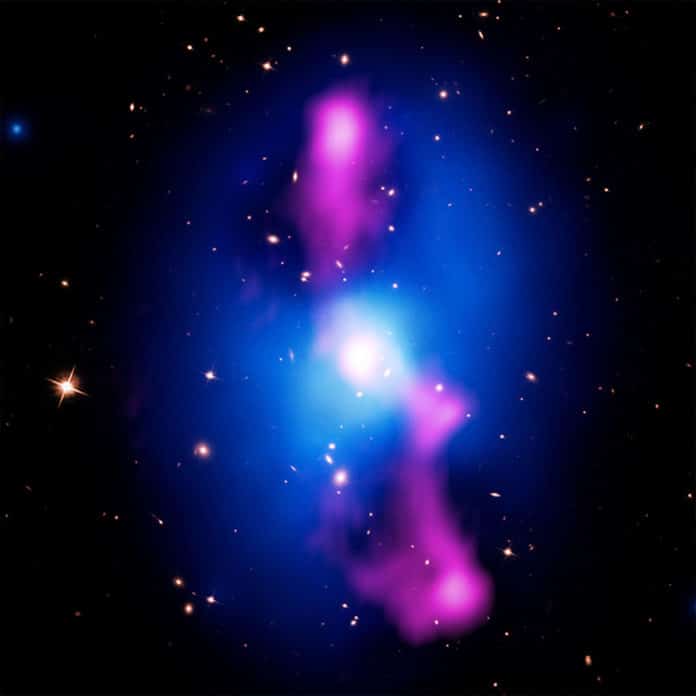Hercules-Corona Borealis Great Wall is a supercluster of galaxies, measuring approximately 10 billion light-years in length. In 2013, astronomers who discovered it suggested that the cluster is the largest known structure in the observable universe.
To understand supercluster evolution, it is essential to understand the inner workings of the building blocks of superclusters—galaxy clusters. Does it also involve understanding how energy is injected into the plasma that comprises galaxy clusters? How is this energy spread around to heat the entire enormous system?
To find out the answers to these questions, an international team of scientists from the University of Rochester, Oxford University, and the University of Chicago have created a replica of conditions characteristic of the conditions that exist within galaxy clusters. They demonstrated how thermal conduction is suppressed in a plasma—causing galaxy clusters to be hotter than expected.
The study offers insights into the complex physical processes within the galaxy clusters.
Petros Tzeferacos, an associate professor of physics and astronomy, said, “This work opens a new, experimental path to address a long-standing astrophysical question: Why are the cores of galaxy clusters so hot, despite the copious amounts of radiation they emit? Accounting for this energy budget will help us understand how galaxy clusters evolve and how their large-scale structure is set up.”
Magnetic fields thread plasma within a galaxy cluster. It is in a turbulent state, moving in a random manner like smoke from a chimney.
Scientists have never replicated the turbulent plasma present within galaxy clusters experimentally. In this study, scientists could do so by using high-powered lasers at the National Ignition Facility (NIF) at Lawrence Livermore National Laboratory (LLNL).
Using lasers, scientists vaporized plastic foils and generated a turbulent and magnetized plasma. The electrons in the plasma infrequently collide and end up following the tangled magnetic field lines. This phenomenon suppresses heat conduction, giving rise to pockets of hot plasma that cannot escape, causing the cores of galaxy clusters to be much hotter than anticipated.
Gianluca Gregori, a professor of physics at the University of Oxford, who was the principal investigator in these experiments, said, “This work is an important stepping stone in understanding microscopic processes that occur in plasmas that are both magnetized and turbulent. The experimental findings are surprising, as they demonstrate that energy is transported in ways that are very different from what we would have expected from simple theories.”
Three-dimensional simulations carried out with the FLASH code were used to help design the platform and analyze the experimental data.
Tzeferacos said, “The FLASH simulations and our previous LLE experiments were key for untangling the physics at play in the turbulent, magnetized plasma. The level of thermal transport suppression, however, was still beyond what we expected.”
Journal Reference:
- Jena Meincke et al. Strong suppression of heat conduction in a laboratory replica of galaxy-cluster turbulent plasmas. DOI: 10.1126/sciadv.abj6799
